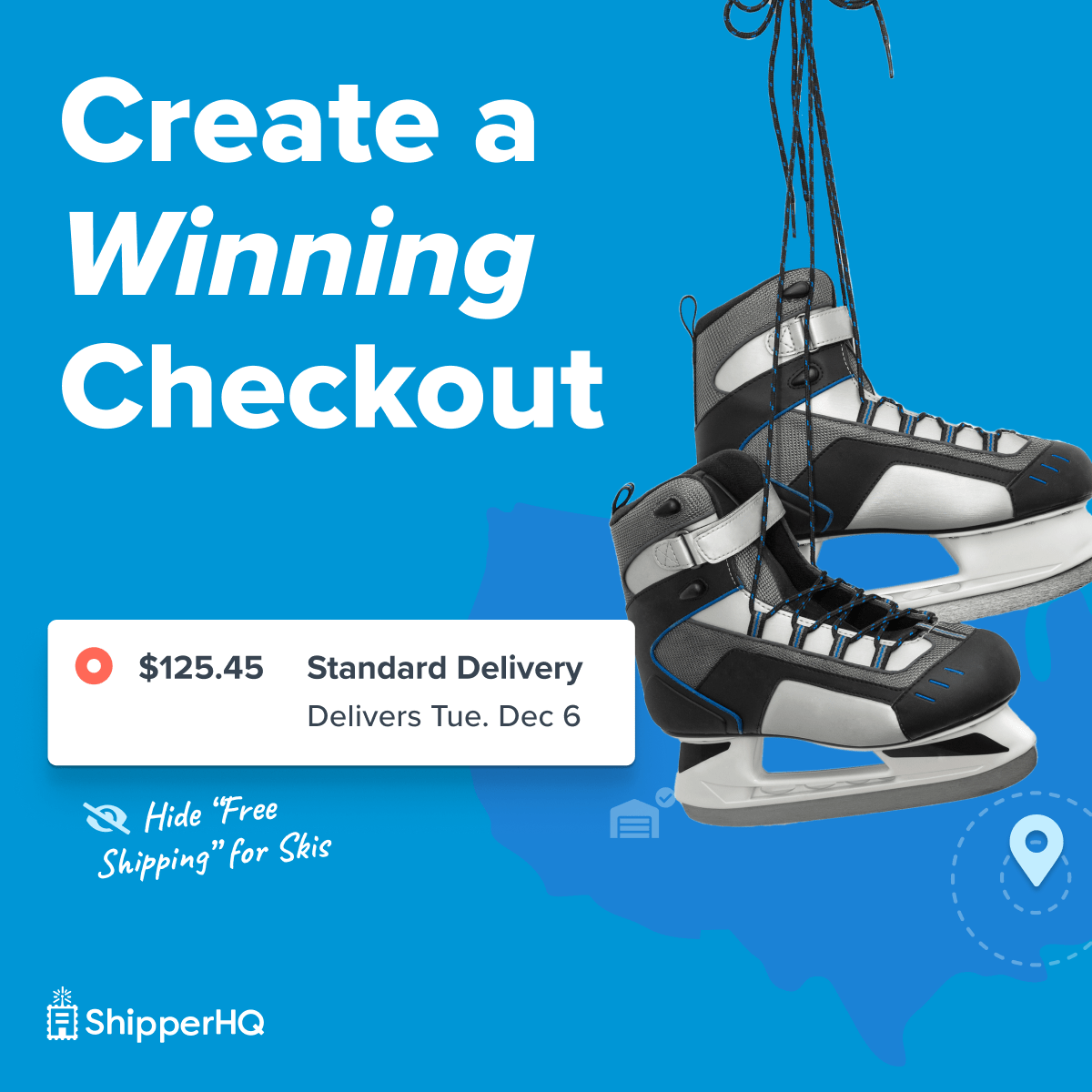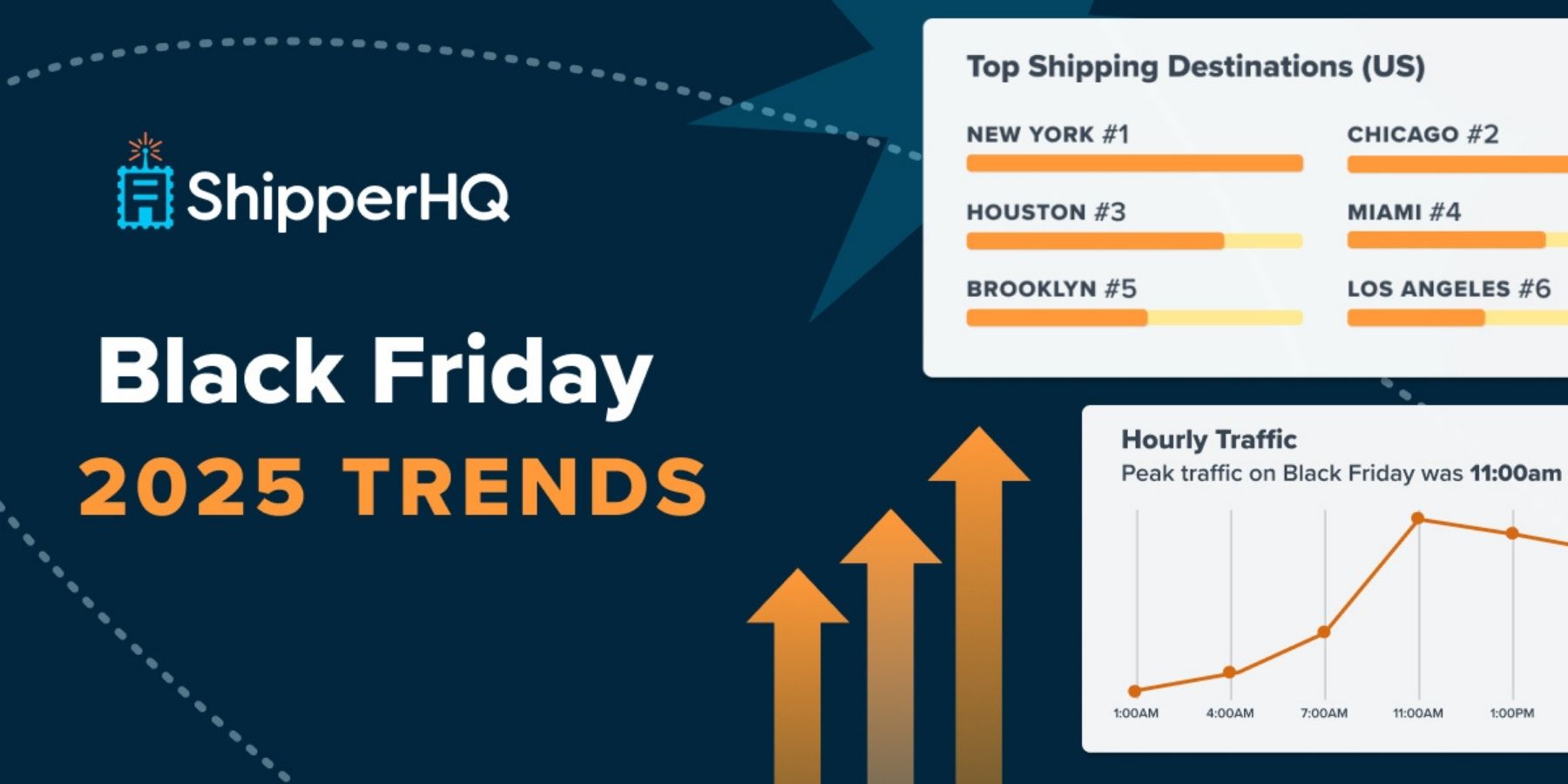Despite inflation, U.S. retail eCommerce sales reached $291.6 billion in Q2 2024, a 6.7% increase year-over-year. Consumer spending patterns have shifted and this has pushed retailers to adapt their strategies, focusing on discounts and shipping promotions to attract budget-conscious shoppers.
Today’s online shoppers have high expectations for delivery and convenience— they’re accustomed to fast and reliable deliveries. This puts pressure on retailers to not only meet these demands but also manage their costs, minimize errors, and ensure a seamless customer experience.
That’s where shipping software steps in, empowering retailers to efficiently meet the demand for fast and reliable deliveries. It automates and optimizes every step of the shipping process— from real-time rate calculations to carrier selection and delivery tracking.
But here’s the catch: not all shipping software is created equal. Therefore, choosing the right solution can make the difference between a smooth checkout experience that drives conversions and a clunky one that leads to abandoned carts. In this blog post, we’re going to tell you how to get the most out of your shipping by investing in the right tools to help you win more sales.
Why Do eCommerce Retailers Need Shipping Software?
The reality of running an eCommerce store is that shipping can make or break your business. Whether you’re a small online boutique or a large retailer, fulfillment complexities can turn into a logistical nightmare without the right tools. Let’s explore the challenges.
Common Shipping Challenges Faced by eCommerce Merchants
- Cart Abandonment Due to High Costs: Customers get to checkout, see unexpected fees, and bam! They’re gone.
- Managing Carrier Rate Changes: Carrier rates fluctuate based on fuel costs, shipping zones, package dimensions, and more. Trying to keep up manually? Good luck.
- Handling Multiple Carriers and Delivery Options: From UPS, FedEx, and USPS, to regional couriers, managing multiple carriers can quickly become overwhelming.
- Inaccurate Shipping Rates: Overcharging frustrates customers while undercharging eats into your profit margins.
- Delayed Deliveries: Few things sour a customer relationship faster than a late delivery.
This is where a shipping software is helpful. It tackles everything from real-time rate calculations to optimizing multi-origin fulfillment setups, therefore freeing up your time to focus on growing your business and keeping your customers happy.
Essential Features to Look for in Shipping Software
Choosing the right shipping solution means looking for a comprehensive solution that does more than just print labels. Let’s break down the key features that matter.
1. Accurate Shipping Rates & Multi-Carrier Support
- Accurate, real-time shipping rates prevent cart abandonment.
- Additionally, seamless integration with major carriers ensures precise shipping costs tailored to customer locations.
2. Delivery Date Options & Estimated Delivery Times
- Offering predictable delivery dates altogether enhances the customer experience.
- Clear delivery estimates reduce support inquiries and set realistic expectations.
3. Advanced Rules & Customization
- Set flexible shipping rules based on product type, region, or customer group.
- Customization adapts shipping strategy to unique business needs (e.g., free shipping thresholds, surcharges for oversized items).
4. In-Store Pickup & Multi-Origin
- Offering options like in-store pickup supports omnichannel strategies.
- Managing multi-origin shipping ensures efficient order fulfillment and also reduces delivery time.
5. Dimensional Weight & Rate Calculations
- Advanced packing algorithms accurately charge based on dimensions.
- Prevents unexpected fees and optimizes shipping costs, especially for large but lightweight items.
6. eCommerce Returns Management:
- A smooth, flexible returns process is crucial for customer retention.
- Effective software not only simplifies returns management but also reduces friction and encourages repeat business.
How to Select a Shipping Software for Your Business
With so many options available, selecting a shipping software can feel overwhelming. Here’s how to narrow your choices and find the one that fits your business.
1. Identify Your Needs
Start by understanding your specific requirements.
- Order Volume: Are you shipping 50 orders a week or 5,000? Your needs will differ drastically.
- Shipping Destinations: Do you ship locally, nationally, or globally?
- Shipping Carrier Preferences: Which carriers do you prefer to work with? How do you print packing slips?
2. Scalability & Integration
Choose a system that can grow with your business. It should integrate smoothly with your eCommerce platform, whether you use Shopify, BigCommerce, Magento, Adobe Commerce, or any other platform. This ensures your operations can expand seamlessly as your store grows, without causing disruptions to your operations.
There’s nothing worse than spending time and money to set up a tool only to realize you’ll have to upgrade to a new tool as your business grows. Save time and money, pick a tool that will scale with you.
3. Unmatched Reliability
Reliability is key in any shipping software— downtime or errors can lead to lost sales and unhappy customers. Ensure your chosen solution has a robust infrastructure that guarantees consistent performance, especially during peak shopping seasons. This reliability translates to a seamless customer experience and higher conversion rates.
4. Extensive Partner Network
Select a shipping platform with a well-established carrier partner network. This broad connectivity ensures that you can easily access preferred services and expand your operational capabilities without switching platforms. Undoubtedly, a multi-carrier fulfillment strategy is essential for scaling your operations smoothly.
5. User-Friendly Interface & Expert Support
A good solution should be easy to set up and intuitive to use. Look for a platform that offers a user-friendly dashboard and comprehensive customer support. Having access to a responsive expert support team can make all the difference when you need to troubleshoot issues or optimize your settings.
6. Customization & Flexibility
Every business has unique needs, so it’s essential to select a system that allows for no-code customization. Look for features that let you tailor checkout, set discounts or free shipping thresholds, or create specialized rules. Flexibility is key to ensuring your shipping strategy aligns with your business goals and customer expectations.
7. Data Privacy & Security
When handling sensitive customer data, privacy and security are non-negotiable. Look for software built with data protection in mind, using industry-leading security measures to safeguard customer information. Ensuring compliance with global privacy regulations builds customer trust and protects your brand.
8. Advanced Data Analytics
Select a shipping software that provides data-driven insights to refine your logistics strategy. This empowers you to make informed decisions, optimize costs, and enhance your fulfillment process, giving you a competitive edge in business.
Common Pitfalls To Avoid
Here’s where we have seen merchants often go wrong:
- Prioritizing Cost Over Features: Opting for the cheapest option often means missing out on critical functionalities.
- Ignoring the Customer Experience: A clunky checkout process or surprise fees can kill your conversions.
- Choosing Non-Scalable Solutions: As your business grows, so do your shipping needs. Choosing software that can’t scale means costly migrations later.
What Makes ShipperHQ The Best Shipping Software Software for eCommerce Retailers
It’s not just about having a reliable tool; it’s about transforming shipping into a competitive advantage and profit center. Here’s how ShipperHQ delivers on those fronts:
1. Real-Time Carrier Rates: Provides accurate, up-to-date rates from 60+ major and local carriers, ensuring transparency and eliminating surprises at checkout.
2. Flexible Shipping Rules Engine: Allows you to set custom shipping rules based on product type, shipping zones, or customer segments to optimize costs and enhance the customer experience.
3. Accurate Delivery Dates & In-Store Pickup: Offers precise delivery dates at checkout and supports options like Buy Online, Pickup In-Store, reducing cart abandonment and increasing customer satisfaction.
4. Optimized Dimensional Shipping: Uses advanced calculations to ensure cost-effective shipping rates based on package dimensions, avoiding unnecessary carrier fees.
5. Scalability & Seamless Integration: Integrates smoothly with all major eCommerce platforms like Shopify, BigCommerce, Magento, Adobe Commerce, and others. The platform also easily scales as your business grows.
6. Returns Management: Cover the cost of returns by enabling Return Shipping— display a duplicate return shipping rate with an added surcharge for each selected shipping method.
7. Data-Driven Insights & Reporting: Provides analytics on shipping costs and carrier performance, helping you optimize logistics and make data-driven decisions to improve shipping experience.
The Future of eCommerce Shipping
The eCommerce landscape is changing fast, and shipping is no longer just a cost— it’s a strategic advantage. By leveraging the right shipping software, you can reduce cart abandonment, improve customer loyalty, and optimize your bottom line.
ShipperHQ provides a powerful, flexible, and scalable solution that grows with your business. Don’t leave your shipping strategy to chance— sign up for a free trial to explore powerful features like real-time rates, customizable rules, and delivery date management. Test how it optimizes costs, improves checkout, and boosts conversions, all while gaining powerful insights to streamline your fulfillment strategy.
FAQs About eCommerce Shipping Software
1. What is a shipping software, and how does it work?
Shipping software automates tasks like rate calculation, label generation, and order tracking. It integrates with eCommerce platforms and carriers to simplify and optimize shipping processes.
2. What are the benefits of using shipping software for eCommerce retailers?
Shipping software streamlines operations, reduces fulfillment errors, and enhances the customer experience. Hence, it saves time and lowers costs with automated workflows and carrier rate comparisons.
3. How do I choose the right shipping software for my online store?
Here are the key features to look for when choosing the right shipping software for your online store:
- Accurate Shipping Rates & Multi-Carrier Support: Ensure real-time, precise shipping rates to avoid cart abandonment.
- Delivery Date Options & Estimated Delivery Times: Offer clear and predictable delivery dates at checkout to enhance customer experience.
- Advanced Shipping Rules & Customization: Create flexible shipping rules tailored to product type, region, or customer group.
- In-Store Pickup & Multi-Origin Shipping: Support omnichannel strategies with in-store pickup options and multi-origin shipping management.
- Dimensional Shipping & Rate Calculations: Use advanced packing algorithms to calculate shipping rates based on dimensions, ensuring accurate charges for large but lightweight items and preventing unexpected fees.
- Returns Management: Streamline the returns process to enhance customer retention. Easy returns management encourages repeat business, especially for high-return industries like fashion and electronics.
4. Can shipping software help reduce shipping costs for small businesses?
Yes, it lowers costs for small businesses by comparing rates, securing carrier discounts, optimizing packing, and minimizing errors that lead to extra charges.







